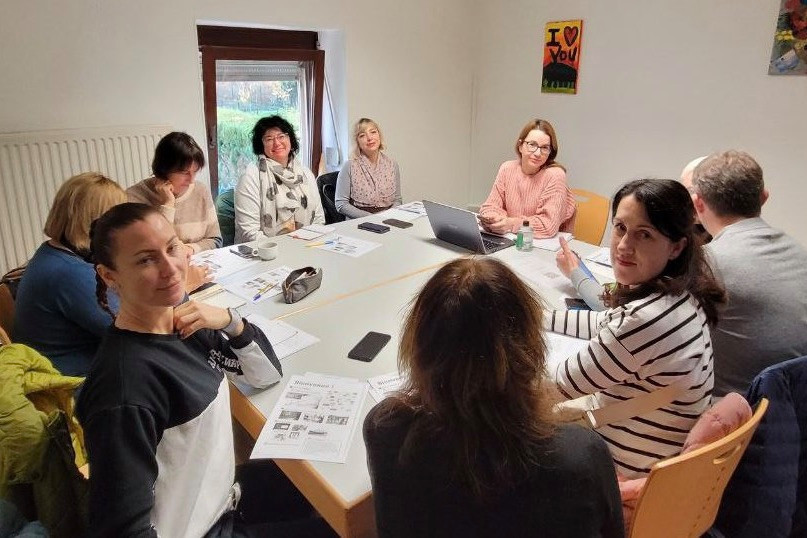The Ukrainian House at 48 rue des Romains hadn’t originally been purchased for this reason by the Strassen commune, but to use as a youth centre. However, as the war continued in Ukraine and more and more refugees made their way to Luxembourg, the administration decided to turn it into a platform for new arrivals from Ukraine to meet up, partake in activities and exchange information with one another.
One year in, the project developed far beyond expectations. “When this began last year, we thought the Ukrainian House would only be needed for three months,” remembers Nico Pundel, the mayor of the municipality. “But then, more and more local people came by to offer their help and new activities, like running, swimming, art,… So now it’s become a community house where people don’t live together but spend time together,” he tells Delano in an interview. The commune also hired two Ukrainian refugees--who were a choreographer and singer in their previous life--as well as two municipal employees to keep the operation running.
“What the house has turned into is not something we could’ve predicted a year ago,” Pundel laughs. There is a lot of dancing and singing, and a lot of solidarity at this meeting point. “We’ve heard so many stories, life experiences of people who often still have family in Ukraine. It’s impressive in itself.”
Read also
A place that benefits locals too
“It was such a fantastic idea--for the Ukrainians and the local people,” says Blathnaid Stroomer, who volunteers as an English teacher. “Sometimes people don’t know where to go to get help, or to help. But this gave them a focal point. They knew they could come and say ‘I can give an hour of English lessons or art…’.”
The locals who volunteer take Ukrainian refugees and their children on trips outside the Ukrainian House too. Between trips to the national library or theatre, the new arrivals get to discover the country they are temporarily, or potentially forever, going to call their home. Stroomer adds that “we’ve created English-speaking ateliers in the Ukrainian House a few times a week, for instance, where people come and practice the English they’ve learned outside,” allowing their new neighbours to hone their skills.
The community house gives newcomers an anchor, says Stroomer. An Irish native, she says: “I came here as a foreigner, and for me, it’s the same for the Ukrainians that came here, even if they thought it would be very short-term. It has been longer than expected for many of them.” The locals help them with “simple things--things that, when you’d arrive as a foreigner, you also would’ve had problems with.”
Of course, there is no hiding the fact that the Ukrainescht Haus was born from the war, and so “we always hoped it would quickly stop needing to exist,” says Pundel. “But we saw that it fulfilled its purpose much better than we had anticipated a year ago. So now we’re letting it continue organically and without pressure.” The house will remain what it is “until the Ukrainian community doesn’t need it anymore.” Afterwards, it could serve as an international exchange house for the municipality, which has the most foreign residents after Luxembourg City.
The beauty of the project, concludes Stroomer, is that “there is always someone at the house. It gives people a sense of home and a space that’s solid in a world that’s always shifting.”
